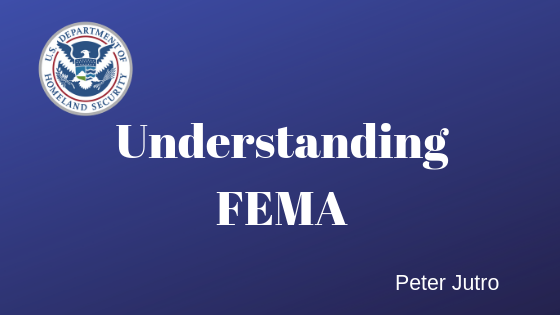Over the past ten years alone, we have seen an increase in natural disasters across the nation, from the fires on the west coast to the tornadoes in the midwest. It is not only the first responders that have many responsibilities, but also the Federal Emergency Management Agency, or FEMA. Many only know of FEMA because they have seen FEMA tents or trucks after a natural disaster. FEMA does a great deal more, especially before and during a natural disaster as is indicated in its mission statement: “helping people before, during and after disasters.” Before we get into what FEMA does, let’s take a look at its origins. FEMA began as an independent agency in 1979, when President Jimmy Carter created the agency. It succeeded the Federal Disaster Assistance Administration which was part of HUD. Following 9/11, FEMA became part of the Department of Homeland Security.
FEMA’s roots can be traced back to a Congressional act passed in 1803. In 1803, a fire caused massive damage to the town of Portsmouth, New Hampshire. The Congressional act provided relief for the townspeople by extending the time they had to pay tariffs. It is considered the “the first piece of national disaster relief legislation.” Between 1803 and 1979, ad hoc legislation helped those affected by natural disasters, including the well-known Chicago Fire of 1871 and the Great Galveston Hurricane of 1900.
Attention to emergency management began to increase under President Franklin Roosevelt during the 1930s, when the U.S. government created funds and agencies for natural disaster relief to help rebuild the economy after the Great Depression. For example, the Reconstruction Finance Corporation and the Bureau of Public Roads were established to provide loans to disaster-stricken areas for rebuilding public works such as roads and bridges. Another act, the Flood Control Act of 1934, gave the U.S. Army Corps of Engineers responsibility for flood-control projects.
As the decades passed and more natural disasters occurred, the need for an official agency became increasingly evident. The creation of FEMA specified a clear role for the Federal Government in preparing, responding, mitigating and recovering from natural disasters, as well as accidents and terrorism. The main goal of FEMA is to work with other organizations for the benefit of the people; if a state governor requests a Presidential Disaster Declaration. FEMA can:
- provide temporary repairs and housing support for those affected and displaced
- coordinate food distribution
- ensure medical teams get to the sites
- secure sites, in coordination with local law enforcement
- provide financial disaster relief assistance.
Although there have been changes to FEMA over the past 40 years, it took another natural disaster to illustrate what more was needed. The Post-Hurricane Katrina Reform Act of 2006 gave FEMA more authority and better access to resources. FEMA can now use these additional authorities to help address the increasing numbers of fires, floods and tornadoes our nation is experiencing. FEMA is now able to be even more proactive and more reactive concerning natural disasters and their consequences.

